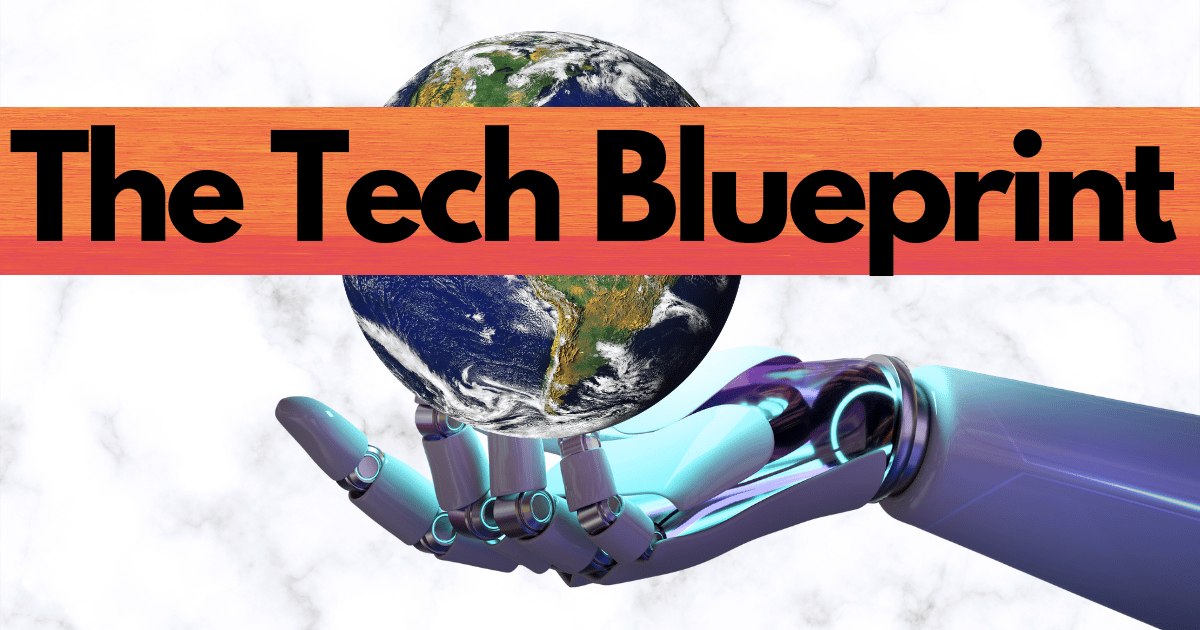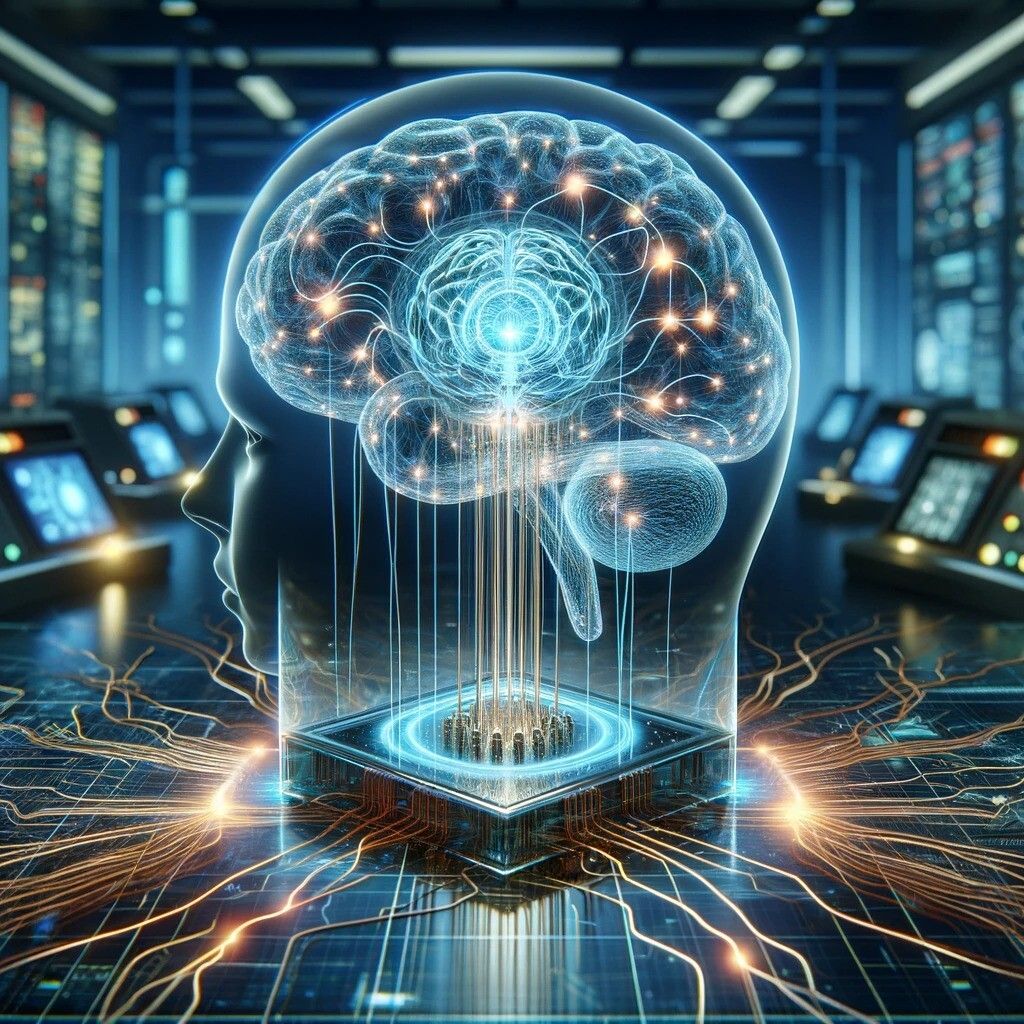
Welcome to The Tech Blueprint!
In today’s Tech and AI updates:
🌐 MIT's Breakthrough AI Predicts Human Behavior with Unprecedented Precision
🫧 Discover How Quantum Leap's New Stretchable QLEDs Are Redefining Displays
➰ Experience How Super Loops Are Revolutionizing Memory Efficiency
💥 Charge Ahead with a Material That Boosts Capacitor Power 19-Fold
🔺 Master Conflict with Ease: Discover the Power of the TKI Model
Read Time: 7 minutes
Let’s begin by focusing on 4 pieces of news that were most noteworthy this week!
🌎 Transformational News 🖊️
Updates from around the world that have the potential to change the world!

What is the news?
Researchers at MIT and the University of Washington have created a model that can predict human and AI behavior under computational constraints.
This model estimates the "inference budget" of agents, which indicates how long they will plan or think before making a decision. This ability to predict future actions is based on observing past behaviors.
Why should you care?
The model's capability extends to various practical scenarios like predicting chess moves or determining navigation goals from previous routes.
This innovation is significant because it enhances how AI systems collaborate with humans, potentially making AI assistants more intuitive and helpful in daily interactions and complex decision-making processes.
Where and How can you use it?
For industries and fields where decision-making under constraints is crucial, such as in strategic games, navigation systems, and interactive AI, this model can offer a way to improve performance and outcomes.
This approach could lead to more sophisticated AI systems that are better at understanding and predicting human behavior, which is invaluable in enhancing AI-human interaction.
☄️ Educational News 📚
Learning Medium, Productivity Hacks, etc that help you evolve to the next version of yourself.

What is the news?
Breakthrough in Stretchable Display Technology: A team from the Institute for Basic Science in South Korea, led by Professor KIM Dae-Hyeong, has developed the first intrinsically stretchable quantum dot light-emitting diodes.
This new type of QLED can stretch significantly while maintaining high performance, marking a major advancement in display technology.
Why should you care?
Superior Performance and Energy Efficiency: Unlike traditional OLEDs, these new QLEDs offer enhanced color reproduction, brightness, and longevity.
The ability to stretch up to 50% without losing functionality opens up new possibilities for wearable electronics and adaptable interfacing technologies that require displays to conform to flexible surfaces or moving parts.
How can you use it?
Potential Applications in Wearable and Flexible Electronics: The stretchable QLEDs are particularly suited for next-generation electronics, including wearable devices, automotive displays, and medical monitors, where flexibility and durability under strain are crucial.
This innovation paves the way for electronics that can seamlessly integrate into everyday life without compromising on performance or aesthetic flexibility.
This research signifies a pivotal shift towards more dynamic and adaptable electronic displays, potentially transforming how we interact with technology in various environments.
💥 Creativity Corner 🗡️
Creative Use of Technology that can touch lives!

What is the news?
Brain-like Computing with Superconductors: Researchers at the University of California - San Diego have developed a new type of memory using superconducting loops that works more like the human brain, making computing more energy-efficient.
Why should you care?
This technology dramatically reduces the energy needed for storing and processing information.
Unlike traditional digital computing, which constantly consumes power, these superconducting loops require energy only during specific operations, potentially saving vast amounts of energy.
Where and How can you use it?
Enhancing Machine Intelligence :This breakthrough has dual potential. In computing, it can lead to machines that think and learn more effectively.
Understanding the Brain: In neuroscience, it offers a new model to study human memory and brain functions, providing insights that could lead to better understanding and simulation of neural processes.
🤖 Hi-Tech News 📌
The latest updates in AI and Tech from around the globe.

What is the news?
Researchers at Washington University in St. Louis have developed a ferroelectric capacitor that significantly surpasses the energy density and efficiency of current models.
Using novel 2D/3D/2D heterostructures, these capacitors have achieved 19 times the energy density of existing models and maintain over 90% efficiency.
Why should you care?
This development represents a major advancement in capacitor technology, crucial for modern electronics that require ultrafast charging and discharging.
The improvement in energy storage capabilities means more efficient power management in devices ranging from portable electronics to industrial applications, contributing to advancements in sustainable technology.
Where and How can you use it?
The novel heterostructure material opens up new possibilities for high-performance electronic devices.
This includes applications in high-power electronics, high-frequency wireless communication systems, and integrated circuit chips, essential for sectors like electric vehicles and infrastructure development.
This material's characteristics could lead to more robust power management solutions and enhance the performance of electronic devices across various industries.
Additionally, its ability to maintain high energy density with minimal loss over repeated charges could revolutionize energy storage in electric vehicles, making them more efficient and sustainable.
🔮 Magical Productivity Hack 🔮
The productivity hack of the week

What is Thomas-Kilmann Conflict Model?
The Thomas-Kilmann Conflict Mode Instrument (TKI) is a model that identifies five different styles to handle conflict: Competing, Collaborating, Compromising, Avoiding, and Accommodating.
Each style is characterized by its level of assertiveness and cooperativeness.
The model helps individuals understand their natural conflict resolution tendencies and how these styles impact interpersonal and group dynamics
How do I apply it?
Identify Your Natural Style:
Take the TKI assessment to determine which conflict-handling styles you naturally prefer. Understanding your default approach can help you recognize the strengths and weaknesses of your natural response to conflict.
Analyze the Situation:
Before deciding on the best approach to a conflict, analyze the situation. Consider factors like the importance of the goals, the importance of the relationship, and the time pressure.
Select the Appropriate Style
Competing: Use this style when quick, decisive action is needed, and the stakes are high.
Collaborating: Opt for this style when you need to find an integrative solution and the interests of both parties are too important to be compromised.
Compromising: This middle-ground style is useful when the goals are moderately important but not worth the effort or potential disruption of more assertive tactics.
Avoiding: Choose this style when the issue is trivial, or when there is no chance of winning.
Accommodating: Useful when you realize you are wrong, or as a goodwill gesture to help maintain a cooperative relationship.
Apply the Style:
Implement the chosen style in a conflict situation. For example, if collaborating, involve the other party in the decision process to jointly address the conflict.
Evaluate Outcomes:
After resolving the conflict, reflect on the outcome. Did the chosen style effectively resolve the situation? What could have been done differently?
Develop Flexibility:
Practice using different styles in different situations to become more versatile in handling conflicts. This flexibility can improve your effectiveness in both personal and professional interactions.
By following these steps, individuals can apply the TKI model to manage conflicts more effectively. This strategic approach helps in promoting more productive and positive interactions.
♠️ Your Feedback Matters! ♠️
Did you enjoy this newsletter edition?
This edition of The Tech Blueprint was sponsored by The Rundown AI.
If you are curious about The Rundown AI, then continue reading below!
What’s the secret to staying ahead of the curve in the world of AI? Information. Luckily, you can join early adopters reading The Rundown– the free newsletter that makes you smarter on AI with just a 5-minute read per day.
That’s it for today, but don’t forget to subscribe, so you don’t miss the hottest news in Tech, AI, and industry delivered straight to your inbox every week.
👋 Follow me for the latest updates in Tech and AI. 🔔
🔥 Subscribe to my newsletter— The Tech Blueprint™. Join thousands of subscribers who like to kick-start their Tuesdays with a brew of the week’s hottest tech updates, actionable productivity hacks, and brand-amplifying tips delivered fresh to your inbox!




